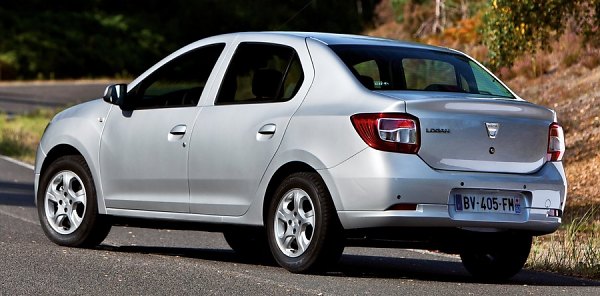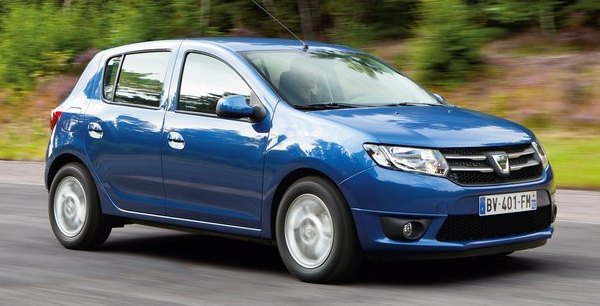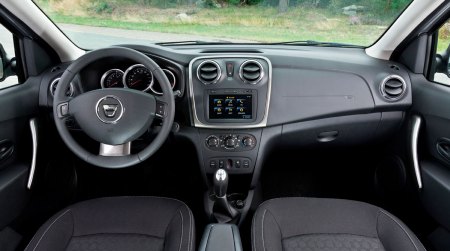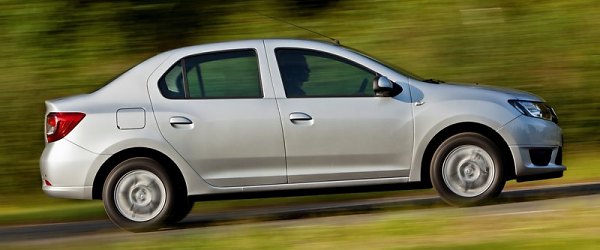|
|
|
Published
on 9
Jan 2013
|
All rights reserved.
|
|
|

|
When Renault
acquired the outdated and loss-making Romanian car maker Dacia in 1999,
few people understood its significance. Today, Dacia is proved to be
the best investment Renault made since Nissan. Morgan Stanley estimated
the division returned a 9 percent profit margin, matching some premium
car makers like Mercedes-Benz and is well ahead of Renault's own 0.4
percent. Low production cost is a main reason for its profitability,
but equally important is the surprising market reception of its cars,
starting from Logan to Sandero, Duster SUV and Lodgy MPV. Dacia sells
about 350,000 cars a year, yet its influence is far greater than the
number suggested as many more cars are sold under Renault badges. The
Logan, for example, registers over 300,000 units of sales annually in
both Dacia and Renault forms, and this has been true in the past 6
years without any major makeover! Not many cars can attract such a
sustainable demand.
The original Logan was all about affordability and practicality. Its
no-frills design, off-the-shelf parts and low production costs enabled
an entry price of only €6000 at its home country or €7500 in Western
Europe – that's half the price of a typical B-segment supermini!
Moreover, it was known to be cheap to run and highly reliable.
Performance was adequate, while handling, ride and refinement were
better than expected for a cheap car. Never before a car originally
designed for developing countries attracted such a strong demand in
Western Europe. Many bought it instead of used superminis or the
smallest A-segment minis.

|
The second generation Logan keeps most of these merits, but it has
sorted out the biggest problem of the old car, i.e. an undesirable
packaging. Instead of the 1980s folding-paper school of design, the new
Logan looks far more modern and graceful. Its body shell is smoother,
rounder and visually more solid. Its headlamps and subtle crease lines
on fenders can be even called stylish. Varying panel gaps can still
reveal its Romanian build quality, but judging on design alone it looks
remarkably close to a regular European car. The only exception is the
€6700 base model in Romania, which has black bumpers, white body paint
and uncovered steel wheels. Western European won't accept these
compromises, so their cars cost a little more (starting from €7700 in
France). Worth noting is the new exterior design has a sense of SUV
thanks to its tallness – the bonnet, the grille, the roof and ride
height are all elevated compared with conventional cars. This is
because its platform is shared with Duster SUV.
Another thing to note is that Sandero has become the hatchback version
of Logan (note: the old car was built on Logan platform but with
different packaging). From this picture you can see it is common to the
sedan from B-pillar forward, though it runs a 45 mm shorter wheelbase,
and the discard of tail reduces its length by nearly 300 mm. Being a
hatchback, the Sandero is undoubtedly to be better selling in Western
European countries.

|
Inside, the packaging is again a vast improvement. The dashboard
finally has some style. The plastics are hard but not as scratchy as
the past. Top-spec model even gets some faux alloy accents and graphite
finish on center console. Mid-trim gets a two-tone dashboard. Space is
no more than before, but it can easily shame all supermini rivals
because this car is simply a class larger. It should be classified to
C-segment and rivals Volkswagen Golf if not because of its price. This
mean four adults can sit comfortably with good head and legroom. The
boot remains at a commanding 510 liters.
Equipment level depends very much on your budget, of course. The
leanest trim has neither air-con, power windows, audio/radio nor
central locking, although it does have stability control to comply with
EU regulations. In contrast, the top trim gets power steering and a
touch-screen multimedia system with satellite navigation, Bluetooth
connectivity and USB/Aux input. Even fully equipped it still undercuts
a base supermini.

|
Don't get me wrong, there is still a huge gulf separating the Dacia and
the likes of Volkswagen Polo, Renault Clio or Ford Fiesta in terms of
styling, build quality and equipment. But because its game has been
raised together with the class, its relative spartan is easier to
swallow. To entry-level motorists this must be a good news.
Apart from packaging, the new Logan and Sandero have some updated
engines. Renault's latest 900cc 3-cylinder turbocharged engine (TCe)
joins the range from the new Clio. Its 90 horsepower and 100 pound-foot
output gives the cars a lively mid-range performance, although spinning
it to upper rev range will result in considerable noise and vibration,
which are not as well insulated and damped as in Clio. Likewise, the
1.5dCi turbo diesel, improved from 86 to 90 hp, doesn't feel as refined
as in other Renault applications, blame to the cost-saving NVH
suppression here. The last engine is the carried-over 1.2-liter sohc
16V with 75 hp, which feels really dated.
 |
Set up to deal with the rural roads of Romania and many developing
countries, the duo rides on soft and long-travel suspensions. This
guarantees a supple ride on rough surfaces like traditional French cars
(before they turned to German route). The cheap hydraulic power
steering is actually quite pleasing to use, being linearly weighted and
pretty communicative. The car also grips and brakes decently. However,
as a driver's car it is about as good as a Citroen 2CV. The soft
suspensions and high center of gravity lead to a lot of roll into
corners and a slow turn-in response. High-speed cornering lacks the
composure of a proper supermini. High-speed cruising is accompanied
with excessive road noise.
After all, this car is not engineered to the standard of normal cars.
It is built to a budget much lower than the usual standard. For the
money it asks for, its dynamics, refinement and build quality
nonetheless exceed our expectation. Most important, it no longer looks
as cheap as its price suggested. The sales success will undoubtedly
continue, at least until rivals come up with comparable budget cars.
|
Verdict:    |
|
|
|
|
|
|
|
|
|
|
Logan
1.2
|
2012
|
| Front-engined,
FWD |
| Steel monocoque |
| Mainly steel |
| 4347 / 1733 / 1517 mm |
| 2634 mm |
Inline-4
|
| 1149 cc |
SOHC 16 valves
|
| - |
| - |
75 hp
|
79 lbft
|
5-speed manual
|
F: strut
R: torsion-beam
|
-
|
| 185/65R15 |
974 kg
|
97 mph (c)
|
13.5 (est)
|
-
|
|
Logan
1.5dCi
|
2012
|
| Front-engined,
FWD |
| Steel monocoque |
| Mainly steel |
| 4347 / 1733 / 1517 mm |
| 2634 mm |
Inline-4, diesel
|
| 1461 cc |
SOHC 8 valves
|
| Turbo |
| CDI |
90 hp
|
162 lbft
|
5-speed manual
|
F: strut
R: torsion-beam
|
-
|
| 185/65R15 |
1059 kg
|
107 mph (c)
|
11.5 (est)
|
-
|
|
Sandero
0.9TCe
|
2012
|
| Front-engined,
FWD |
| Steel monocoque |
| Mainly steel |
| 4058 / 1733 / 1518 mm |
| 2589 mm |
Inline-3
|
| 898 cc |
DOHC 12 valves, VVT
|
| Turbo |
| - |
90 hp
|
100 lbft
|
5-speed manual
|
F: strut
R: torsion-beam
|
-
|
| 185/65R15 |
962 kg
|
109 mph (c)
|
10.5 (est)
|
-
|
|
|
|
|
|
Performance
tested by: -
|
|
|
|
|
|
|
|
|
Copyright©
1997-2013
by Mark Wan @ AutoZine
|
|